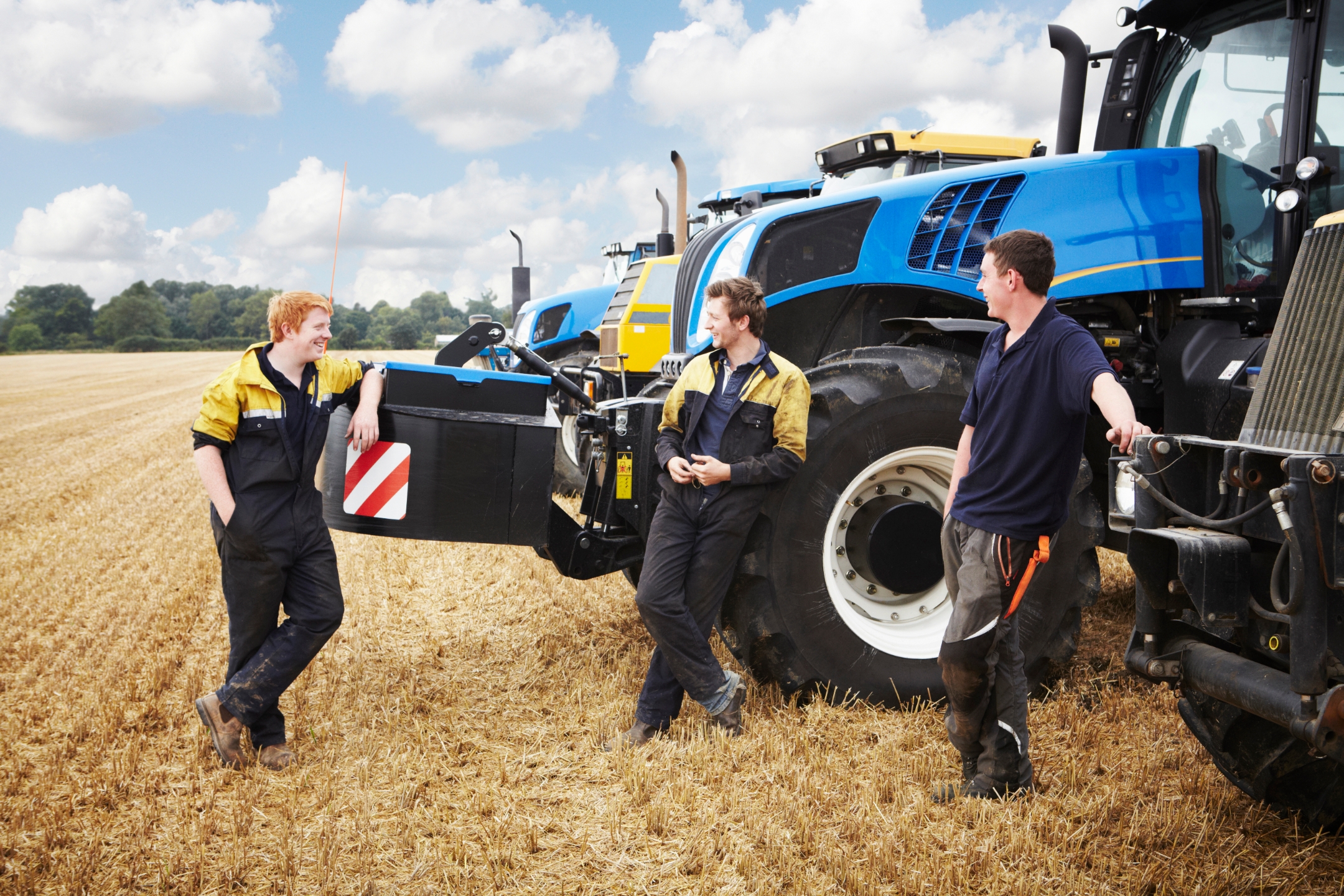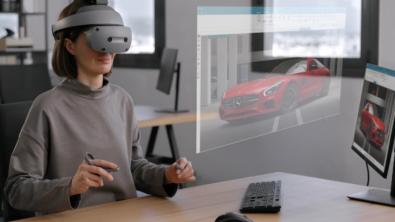The Digital Future of the Heavy Equipment and Off-Highway Industry – Transcript – Part 1

On the Industry Forward Podcast, Dale and I spoke with Hendrik Lange, Director of the Heavy Equipment Industry at Siemens Digital Industries Software, about the challenges facing manufacturers of tractors, construction equipment, and more. We also discuss some of the ways the digitalization is making its way into the design, manufacturing, and maintenance of modern equipment.
You can listen to part 1 of the podcast below, or read the transcript below.
Conor Peick:
Hi there and welcome to the Industry Forward Podcast with Dale Tutt. My name is Conor Peick, your host and a writer for the thought leadership team here at Siemens Digital Industry Software.
Dale Tutt:
And I’m Dale Tutt, vice president of industry strategy at Siemens Digital Industry Software.
Conor Peick:
Today we are continuing our series of podcasts where Dale and I are joined by seasoned experts from around Siemens Digital Industry Software to discuss trends, technologies, and opportunities affecting some of the largest and most important industries in the world. This year, we’re diving into a variety of industries to learn about specific challenges they face and how they’re transforming their businesses for the future. These experts will tell us about everything from medical devices to heavy equipment and more, and explain how each of these industries is approaching digitalization and the digital twin to overcome the hurdles they are facing. Today, we’re eager to kick off with an in-depth conversation about the heavy equipment and off-highway industry. This industry is critical to building infrastructure, collecting raw materials, and producing the food we need to survive and thrive. Joining us to talk about this industry is Hendrick Langa, director of the heavy equipment industry with Siemens Digital Industry Software. Welcome, Hendrick, and thanks for joining Dale and me today. We’re really excited to talk to you. For our listeners, can you quickly talk about your experience and how you’ve come to work in this industry and perform the role you do today?
Hendrik Lange:
First of all, thanks for having me. It’s a pleasure to be on your podcast. I’ve supported customers in automotive, transportation, heavy equipment, OEMs, and suppliers for more than 25 years. Roughly four years ago, we decided to focus on our heavy equipment companies as their requirements are unique in many ways. I’m pretty sure we will talk about this, but as an example, it’s not just focusing on autonomous driving, but also the combination of autonomous driving and operations, which sets them apart from the automotive industry. When we look at the product life cycle, we see similarities to aerospace where the lifespan of the equipment is 30-plus years, including retrofitting. When we focus on heavy equipment, we adapt our Siemens Accelerator portfolio for the specific needs of our industry, and I was asked to lead the industry.
Dale Tutt:
Alright. Well, Hendrick, thank you for being here today. I’m really looking forward to the discussion. I’ve always been intrigued by the heavy equipment and agricultural industry and all the things going on. As you alluded to, a lot of times people think about high tech and may not think about a tractor, crane, or mining equipment. It’s fascinating to see all the transformation going on in the heavy equipment and off-highway industry. Why don’t you tell us more about what these companies are facing in terms of challenges and opportunities in the next 5 or so years?
Hendrik Lange:
Yeah, love to. In general, when we look at the next five years, one of the unprecedented challenges of our time is climate change. We all understand that our environment and resources are under pressure. I guess everybody agrees that we can’t continue business as usual, and therefore, across the industry, innovation is no longer optional. As a result, the farm, construction site, and mine of the future will be very different from what they are today—way more efficient, sustainable, data-driven, fully automated, and connected machines will drive those sites. This has a huge impact on our heavy equipment industry and the manufacturers and their supply chain. To keep up in this changing landscape, our OEMs and their suppliers must dramatically change their offerings, including the technologies they deliver and the way they approach their customers. Instead of making their well-known classic, primarily hydromechanical machines, they must focus on a new generation of highly connected, electrified, autonomous, software-based systems. These new technologies enable and create the need for new and innovative business processes and models, typically leading to much closer interaction between the OEMs, the customer, and the equipment in the field. OEMs and their suppliers are challenged to innovate and embrace new technologies and business models in an increasingly difficult economic climate. They have to spend a lot on R&D, as these are very complex machines, but the volumes are relatively low, equating to low margins. This makes new business models and digital platforms providing software-enabled functionality extremely attractive, promising higher margins and constant revenue streams. There are also other topics like service business and business by the hour or as a service. Our industry is going through a transformation, and heavy equipment companies and their suppliers are challenged to reinvent themselves while dealing with daily business challenges, creating a very complex environment.
Dale Tutt:
I want to tie it in with what we’re seeing in so many industries. Hendrick, as you talked about the complexity of the new equipment and the software and electronics, what I find interesting is that many of the same discussions we’re having in aerospace and automotive with autonomous vehicles and AES overlap with the heavy equipment industry. We have a lot of conversations about how companies want to do systems engineering and software hiring. Often, when we start talking about solutions for our customers, we look at many of the same solutions for the heavy equipment industry that we are looking at for aerospace, automotive, and even complex electronics. Looking forward to the discussion.
Conor Peick:
Given that there are several subcategories within this industry, such as mining, agriculture, construction, and so forth, it might be useful to focus on one of these areas as a case study to learn about the challenges and solutions. Hendrick, is there one of these categories that you feel is a good demonstration of what’s happening in the industry right now?
Hendrik Lange:
Yeah, good point. I think agriculture would be a good option, Conor. There is a huge pressure to feed the world, and we see trends like increasing the efficiency of farming by applying digital technologies and data-driven approaches. This is what we know as smart and precision farming. Precision farming leverages technologies to automate agriculture operations, improving diagnosis and decision-making with the goal of optimizing returns on inputs while preserving resources. This requires smart and highly connected equipment capable of supporting these digital processes and a higher degree of automation. Our heavy equipment industry, which has been mainly hydromechanical, is now transforming towards highly connected systems of systems with a lot of software-enabled functionality. This transformation brings opportunities for new business models, as we touched on initially. We see heavy equipment and agriculture companies offering digital platforms and apps that provide information and software-defined functionality on demand. For example, one of our customers has a harvester that operates at two mph when harvesting, but through the digital platform, you can log into the system and buy additional horsepower for a certain amount of time, making the harvester run faster through the field. This on-demand functionality is software-enabled, and the powertrain is set up for it, allowing additional functionality on demand. For the OEM, it’s an additional revenue stream. We see trends going further, providing equipment as a service, bringing OEMs closer to their end customers and requiring a next level of predictability in maintenance and service. It’s critical to establish feedback from the field on how the equipment is used and typical use cases. Overall, we talk about very complex machines that need to be operated, and there is a lack of skilled labor. Autonomous or semi-autonomous operations help operate complex equipment with limited demand for skilled operators. Finally, the equipment lifespan is 30-plus years, and we see a second life in countries without the same degree of certification and a demand for upgradability and retrofitting of existing equipment. There are many things we can illustrate using the agriculture example.
Dale Tutt:
Yeah, Hendrick, I like agriculture as a choice for this discussion. I think back to when I was a kid riding on the back of my grandfather’s tractor, which only had a starter and lights as electrical systems. A few years ago, I had the opportunity to ride in a combine harvesting wheat, which is now very high-tech and comfortable—a much different experience. The autonomous operations and technology going into these machines are incredible. I love that you’re also talking about changing business models in this industry and how you have to support it for a long time. It’s going to be a fun discussion. Let’s start by talking about the technology. What kind of engineering challenges do you see these companies facing when designing a new tractor, combine, harvester, or any other piece of agricultural machinery? There seem to be so many things to consider. Where does one start?
Hendrik Lange:
In our industry, there are key criteria that won’t go away: performance, durability, and safety. The equipment is operated in harsh conditions and ideally around the clock. Unplanned downtime is not an option. As the industry transforms towards highly connected systems of systems with complex smart products that are software-enabled, you still need to develop extremely robust equipment that is more eco-friendly and operated by labor that doesn’t require specialized skills. Considering changing business models like equipment as a service, you also need predictability, maintainability, and non-performance usage covered. These add to the complexity and require a lot of R&D work. The relatively low volumes impact margins, making it challenging to develop new equipment like a new tractor, embracing new technologies and business models while ensuring performance, durability, and safety.
Dale Tutt:
I agree with that, and you could probably say that is true in many industries, especially around performance and safety. There’s always a focus on getting more performance out of your system, and in aerospace, automotive, and other industries, safety is always a primary concern, whether it’s the operation of equipment or the production process. It’s something that’s top of mind for many companies.
Conor Peick:
Hey there, this is your host, Conor. I’d like to thank you for joining us again on the Industry Forward Podcast with Dale Tutt. We’re really grateful for everyone that tunes in to hear from us and from the guests we have on the show. You’ve just listened to part one of a multi-part episode with Hendrik Lange, the director of the heavy equipment industry at Siemens Digital Industry Software. That’s all for now, and we really look forward to having you back here on the Industry Forward Podcast. Thanks again and hope to see you soon.
Siemens Digital Industries Software helps organizations of all sizes digitally transform using software, hardware and services from the Siemens Xcelerator business platform. Siemens’ software and the comprehensive digital twin enable companies to optimize their design, engineering and manufacturing processes to turn today’s ideas into the sustainable products of the future. From chips to entire systems, from product to process, across all industries. Siemens Digital Industries Software – Accelerating transformation.


